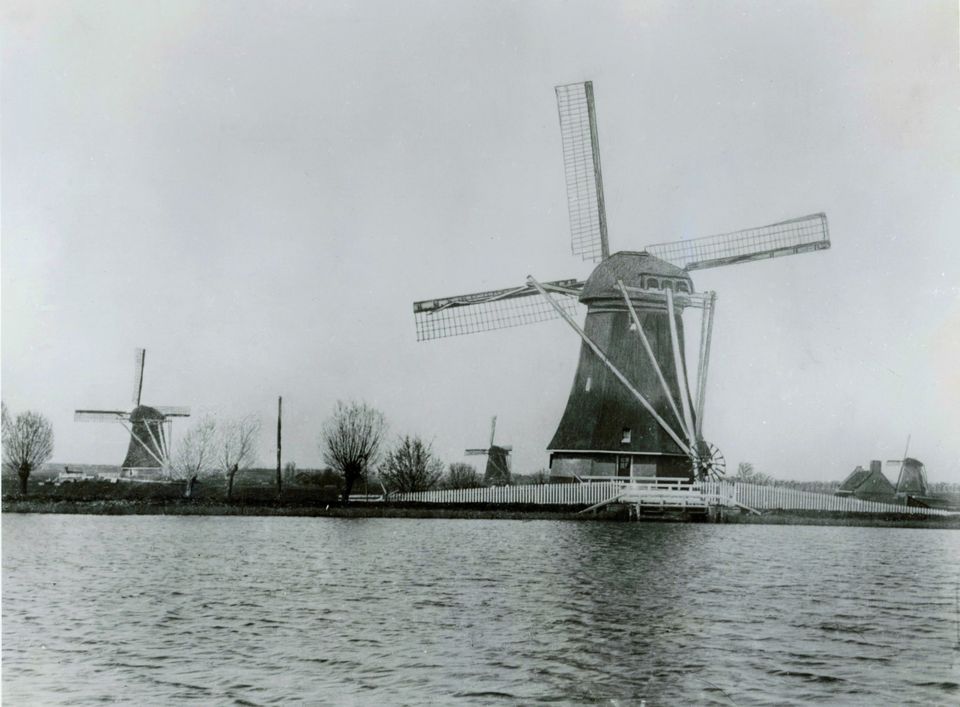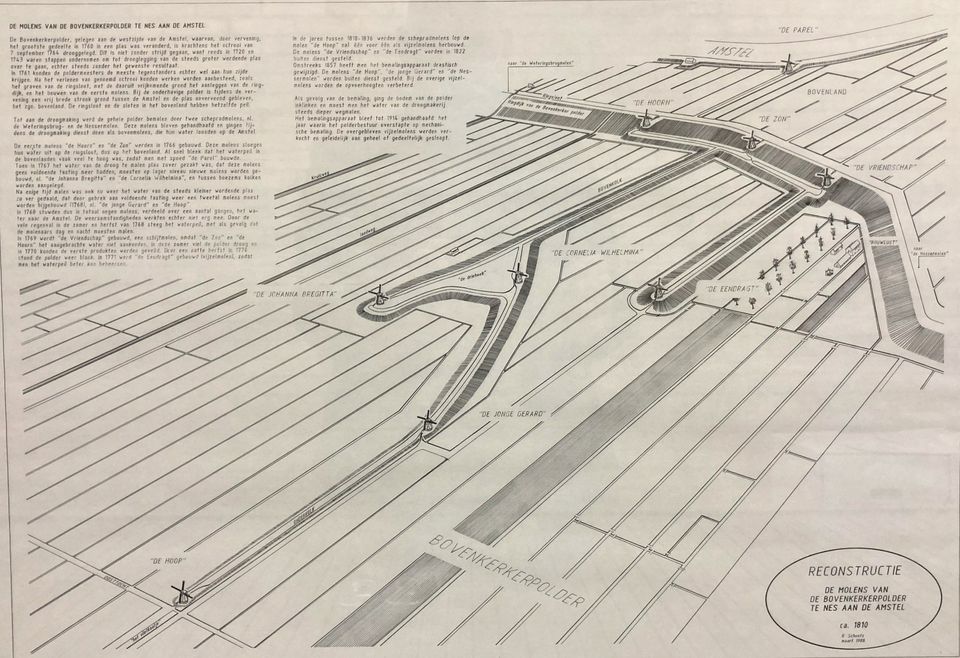
Panel 6 - Ringdijk BP
At the Ringdijk BP (Bovenkerkerpolder), near Nes aan de Amstel, the cultural landscape of the reclamation is clearly recognizable. The "upper land" still retains its medieval parceling, while the lower-lying "lower land" has the uniform polder pattern. Here stood a complex of windmills, comprising a total of nine mills. The windmills had to bridge a height difference of five meters. Due to its extensive layout, this mill complex was nicknamed "The Cathedral". It wasn't until 1914 that diesel engines were introduced for drainage, rendering the mills obsolete.
Mill Stumps
Remnants of the former wind-powered drainage system ca…
At the Ringdijk BP (Bovenkerkerpolder), near Nes aan de Amstel, the cultural landscape of the reclamation is clearly recognizable. The "upper land" still retains its medieval parceling, while the lower-lying "lower land" has the uniform polder pattern. Here stood a complex of windmills, comprising a total of nine mills. The windmills had to bridge a height difference of five meters. Due to its extensive layout, this mill complex was nicknamed "The Cathedral". It wasn't until 1914 that diesel engines were introduced for drainage, rendering the mills obsolete.
Mill Stumps
Remnants of the former wind-powered drainage system can still be seen in the landscape. Three mill stumps from the 'De Kathedraal' mill complex have been preserved. 'De Hoorn' is located on the Ringdijk, 'Cornelia Wilhelmina' is a bit further down in the lower land, and 'De Parel' is situated on the upper land along Amsteldijk Zuid. These are residential houses of exceptional cultural-historical value. Along the Ringdijk BP, there are also several characteristic farms. Some of them are used as care farms, providing day activities and contributing to nature conservation.
Back to the route







